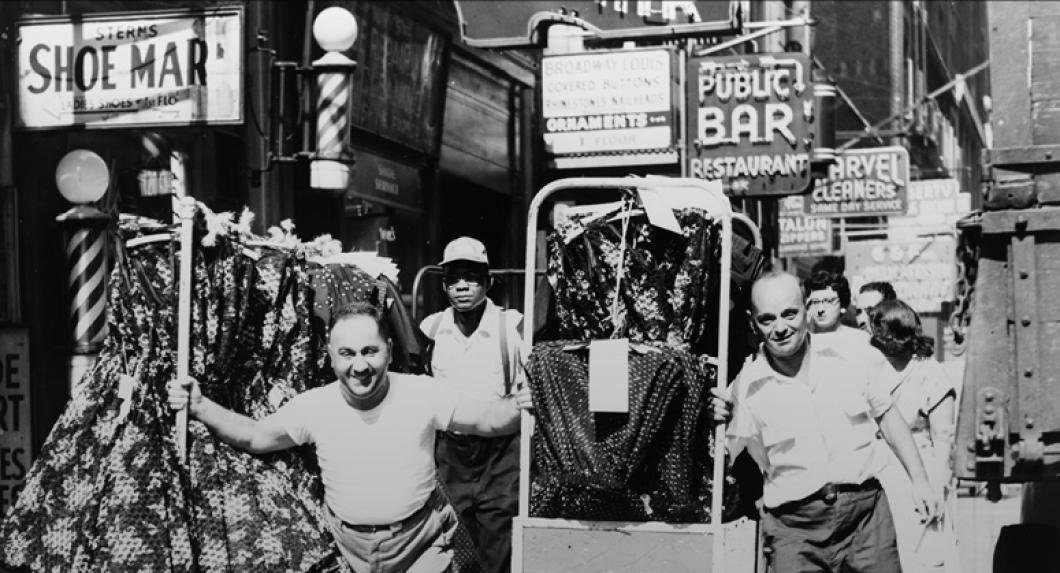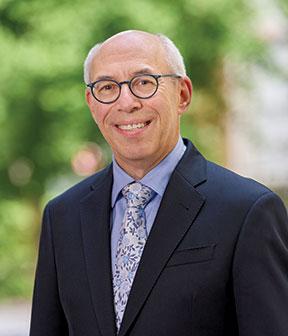In March 2020, as the spread of COVID-19 prompted office workers everywhere to switch abruptly to remote work, Clayton Gillette immediately began thinking about the pandemic’s potential effects on dense urban areas. Gillette’s research on topics such as municipal bankruptcy has made him deeply familiar with the issues of financially stressed cities. It so happened that, when the pandemic hit, he’d been looking at the rise and decline of Manhattan’s Garment District (aka the Garment Center or the Fashion District).
“As I was working on that project and at the same time living with remote work, I began to see some odd parallels,” says Gillette, Max E. Greenberg Professor of Contract Law. “I think of cities as organic entities. Cities evolve. Cities sometimes decline. So cities have a natural life. And it seemed to me that remote work might well have a significant adverse effect on cities…certainly on office work.”
Turning to history, Gillette knew how New York City had created regulation and infrastructure “that either helped to create the Garment District or attempted to preserve it during times of decline.” He reasoned that if predictions about remote work’s dooming effect on urban areas were correct, “then cities are going to try to do something to prevent that demise.”
Gillette characterizes the resulting article, “Remote Work and City Decline: Lessons from the Garment District,” published in the Journal of Legal Analysis in September, as really two articles in one. The first article, he says, is about the consequences of remote work for dense urban areas. That’s still an open question.
“We don’t know what’s going to happen with cities,” Gillette says. “We do know from a lot of the literature that cities that do well are cities that don’t try to identify particular industry winners, but rather invest heavily in those characteristics that would be appealing to a large number of industries…. It is systematically cities that have good infrastructure, good amenities, a well-trained workforce that attract productive industry.”
New York City was just such a magnet for the clothing industry in the late 19th century through the mid-20th century, as the second component of Gillette’s piece explains. The Garment District, an area spanning 34th Street to 41st Street between Sixth Avenue and Seventh Avenue on the west side of Manhattan, arose from a confluence of factors: a dense population area bringing together employees, workers, manufacturers, designers, and customers; a large immigrant population willing to live and work under adverse conditions; a growing cluster of fashion-related industries; and urban amenities, such as public transit and entertainment, attractive to both employees and buyers. The summarizing term for such conditions, Gillette writes, is “agglomeration benefits—increasing returns to scale that result when individuals and firms congregate in relative proximity to each other.”
Agglomeration benefits, he says, explain why cities have continued to attract residents and businesses alike. Residents want superior municipal services and cultural amenities, while businesses need a skilled and highly educated labor pool that itself benefits from the exchange of information among industry colleagues. This symbiotic chain, in turn, helps generate property tax revenues and consumer spending. Thus, the city thrives.
But the lifeblood of urban areas can be cut off unexpectedly, Gillette writes: “Clusters tend to decline due to exogenous shocks, which include technological developments like remote work, but also include events and public policies that alter the social and economic value of a cluster.” COVID-19 and the wholesale shift to remote work undoubtedly constitute such an exogenous shock, imperiling service industries that previously catered to office workers and depressing the value of commercial real estate—along with both tax revenue and cities’ ability to offer municipal services. The potential downward spiral is easy to envision.
For the Garment District, Gillette says, the exogeneous shock arrived as demand gravitated toward “lower-cost, less fashion-oriented clothing.” Manufacturers looked elsewhere for lower-wage labor and cheaper rents. While higher-end fashion manufacturers tended to remain, others departed. A marked increase in imported clothing further contributed to the Garment District’s decline.
Gillette points out in the article that the genesis of the Fashion District was an organic process, driven by business behavior with little help from the city aside from the provision of basic infrastructure. “Nothing suggests that the city explicitly subsidized the industry or directed its location,” he writes.
That is, he adds, until 1987, when New York City attempted to put its thumb on the scale by creating a zoning ordinance requiring building owners to allocate 50 percent of space on the Garment District’s side streets for garment manufacturing. But the industry’s precipitous decline continued. With the relaxation of zoning restrictions, hotels are now the fastest-growing business sector in the area.
For Gillette, the flowering of the Garment District without government interference was a notable success story. However, he says, “what happened in the last quarter of the 20th century and beginning of the 21st century is the intervention of government to try to prevent the decline of an industry. And that was, in my view, at least, a significant failure and probably precluded the entry of what would have been more productive uses of that space.”
As dense urban areas like New York City consider proposals such as subsidizing landlords threatened by office vacancy or aiding a particular declining industry, Gillette urges deliberation—even as he acknowledges he has no easy solutions to offer. “The immediate knee-jerk reaction, which is ‘Let’s prop up what made us productive in the past,’ isn’t going to cut it,” he warns.
Ultimately, Gillette says, cities such as New York have little control over many of the specific factors that cause industrial decline. “The city has to consider, ‘What creative, novel steps do we take to make sure that we can recapture the same degree of productivity and welfare that we had pre-pandemic?’”
Posted January 25, 2024

